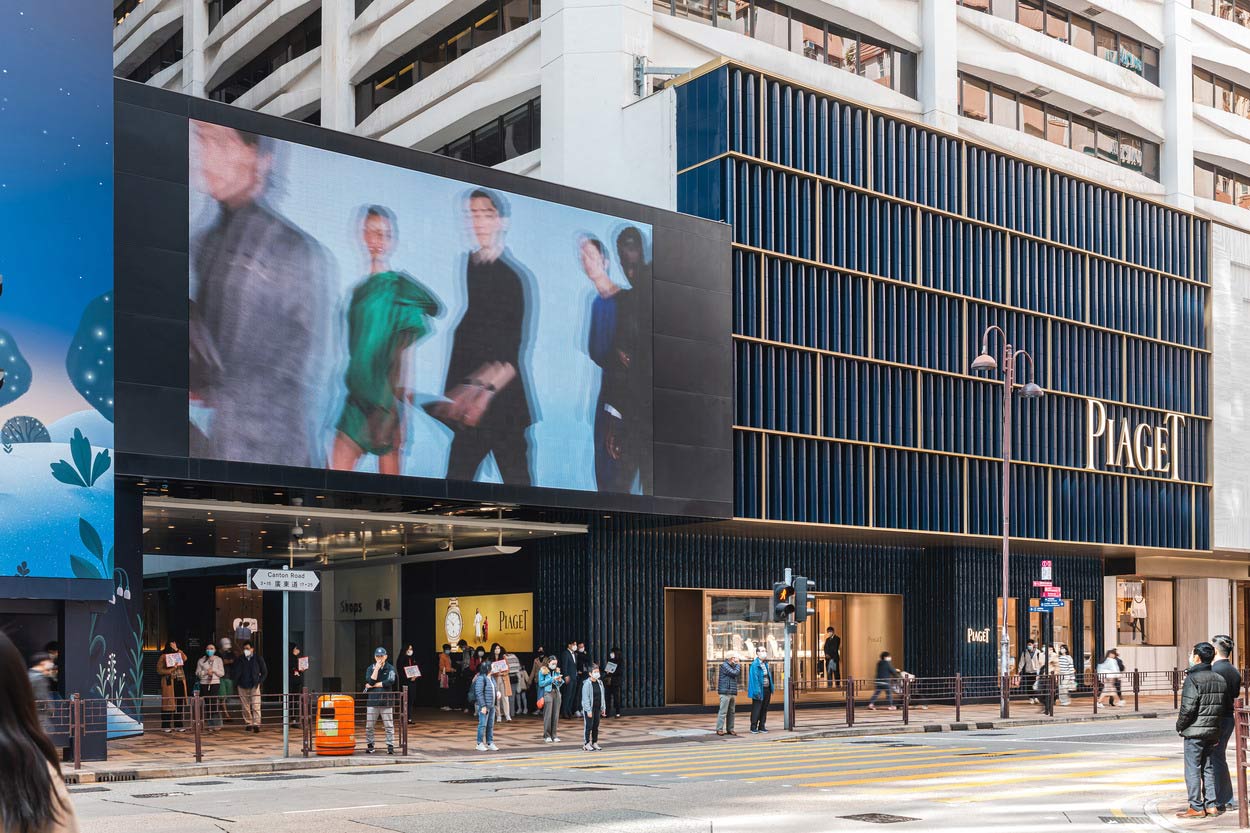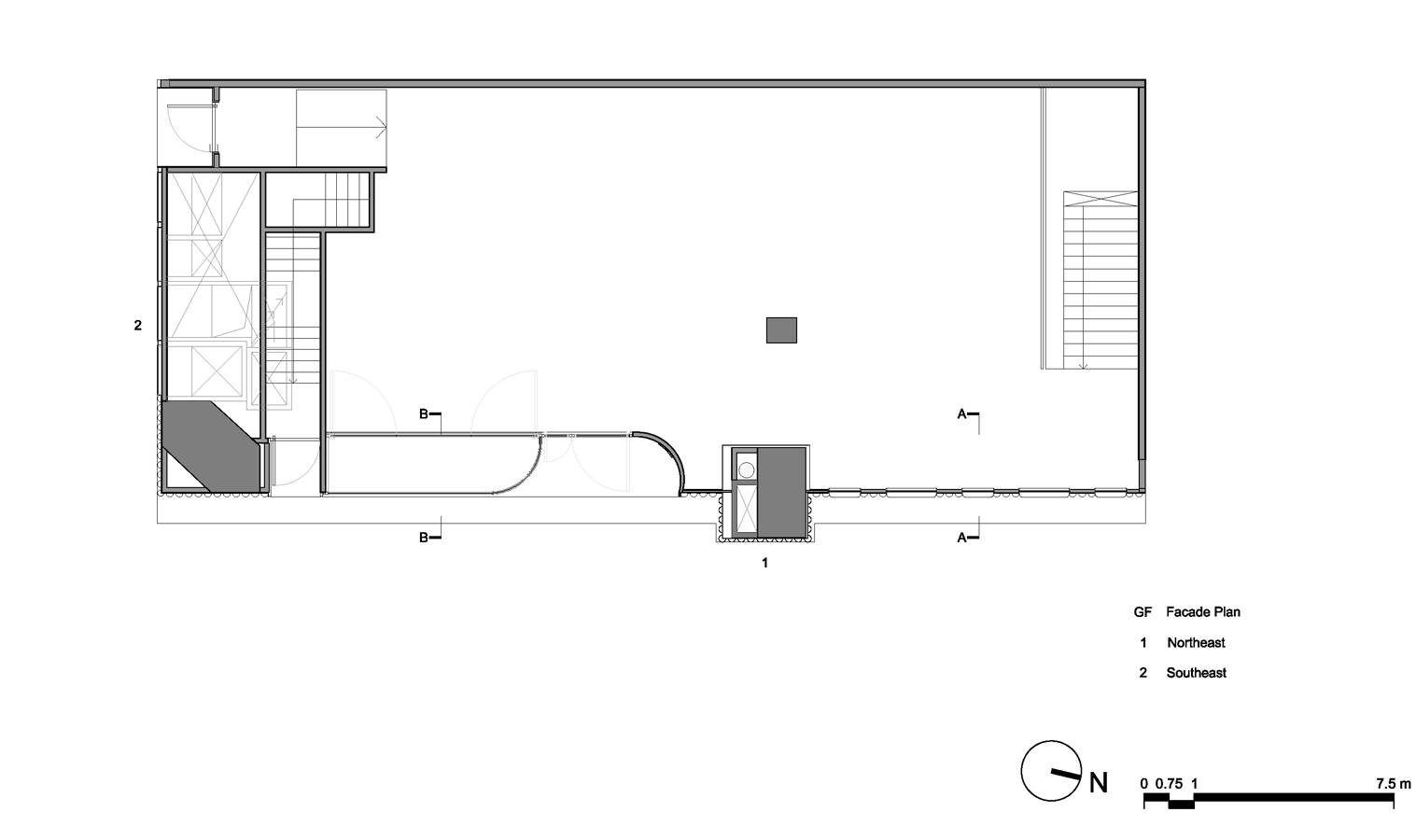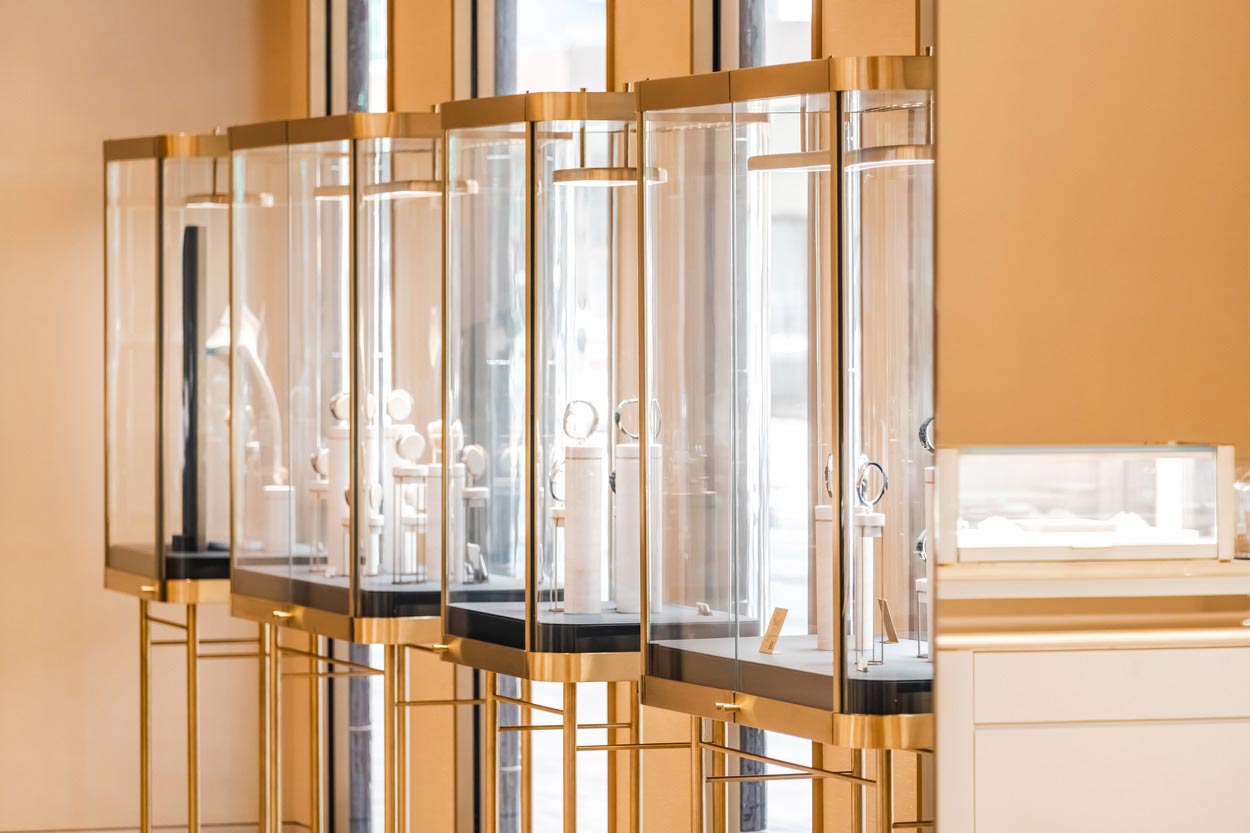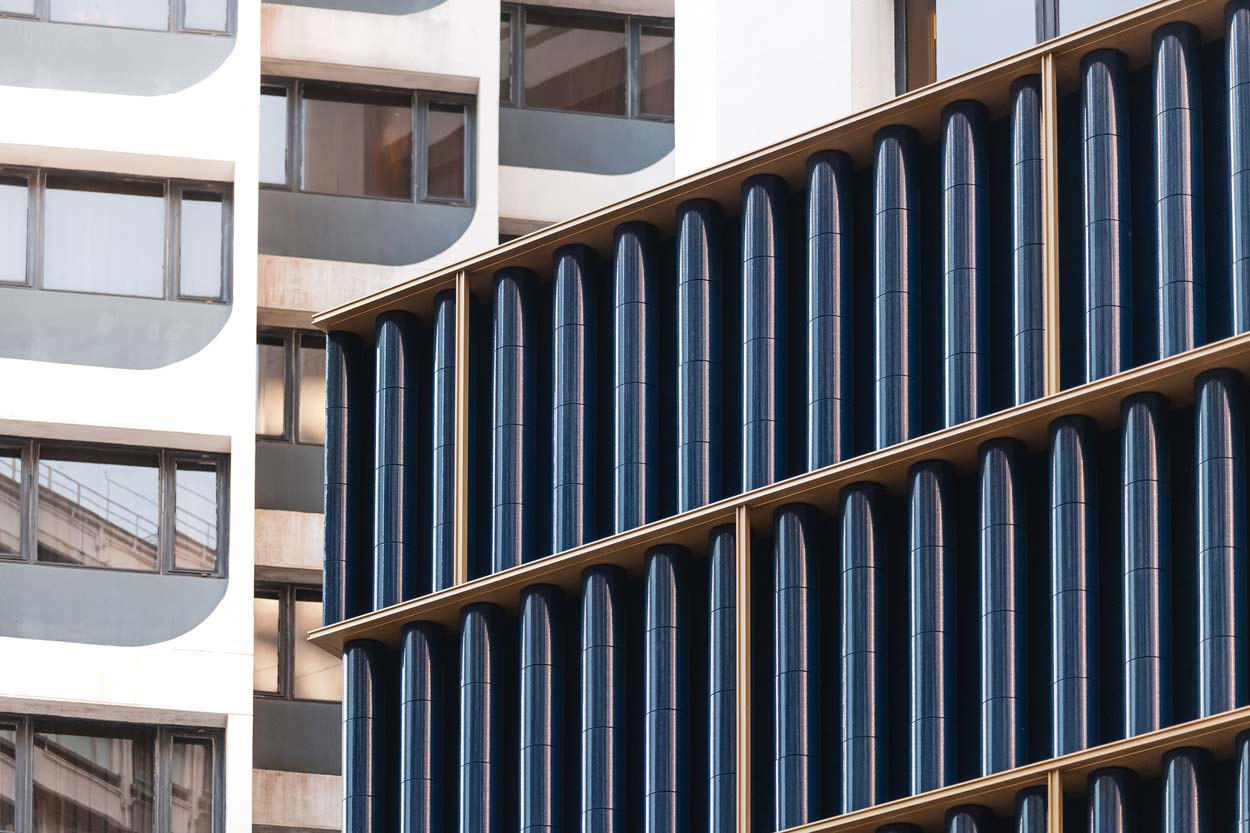Craft and Monument
“One can say that the city itself is the collective memory of its people, and like memory it is associated with objects and places. The city is the locus of the collective memory. This relationship between the locus and the citizenry then becomes the city’s predominant image, both of architecture and of landscape, and as certain artifacts become part of its memory, new ones emerge”, Aldo Rossi.

Photo: Kevin Mak.
Neri&Hu’s design for Piaget’s new storefront on Canton Road draws on the wealth of historic architecture in Kowloon, channeling the innate respect for craftsmanship integral to the watchmaking heritage. Bespoke ceramic tiles glazed in nuanced shades of blue lend the store its architectural presence, complemented by an array of customized metals and concrete – all woven together like an exquisite instrument. The project celebrates the storefront as a jeweled urban monument and repurposes the commercial façade to bring a new monumental presence and civic potency.

Photo: Kevin Mak.

Neri&Hu approached the project with a desire to respond not only to Piaget’s dedication to craftsmanship and innovation in the field of chorography, but also to the site location itself. Situated in the historic wharf area of Kowloon, this district possesses a set of unique qualities. Energized by the canton railway, which once linked to the mainland, it is a vibrant hub for trade and culture, and this dynamic exchange is reflected in the material selections. The metal-work makes reference to the site’s industrial past, while the ceramic tiles are sourced from Jingdezhen, a place that has been producing porcelain for over 1,000 years. Aldo Rossi explained in his seminal work “The Architecture of the City” how memory attaches itself to spatial structures within the built environment. Through time these structures are replaced by modern artifacts which re-write upon the canvas of the city, and thus new artifacts become part of the collective memory of the city.

Photo: Kevin Mak.

In many ways Canton Road is still synonymous with luxury retail in Hong Kong; over decades, however, with a constant rotation of tenants and their endless competition for attention, it has become increasingly difficult to filter through the chaos. Neri&Hu introduces a calm and elegant presence to the storefront condition through the use of authentic crafted materials, whose natural qualities are highlighted by their placement and detailing. Custom-shaped handmade ceramic tiles, glazed in nuanced shades of deep blue, are framed in bronze. The combination of materials woven together in refined detail injects Piaget’s DNA into its new home on Canton Road. Much like civic monuments of ancient times, this approach reinforces the notion of architecture as a cultural symbol for the city and a mirror to our shared heritage and values.

Façade Plan.
该项目不仅希望传递Piaget伯爵对制表工艺的传承与创新追求,更希望响应九龙码头区的历史定位。这里曾连通九广铁路至大陆,是贸易和文化交流的中心枢纽。铜质材料的运用暗示了这片土地的工业历史;而从景德镇手工生产的瓷砖,则如同景德镇悠久的文化与手工业历史一般,映射了这个文化交流枢纽的背景,也体现了品牌对工艺传统的传承。阿尔多·罗西(Aldo Rossi)在他的开创性著作《城市建筑学》(The Architecture of the City)中解释了记忆是如何附着于建造环境中的空间结构。随着时间的推移,部分原有结构逐渐被现代化的建造所取代,并重绘了城市的画布,而新建造物也逐渐成为城市集体记忆的一部分。

Photo: Kevin Mak.












